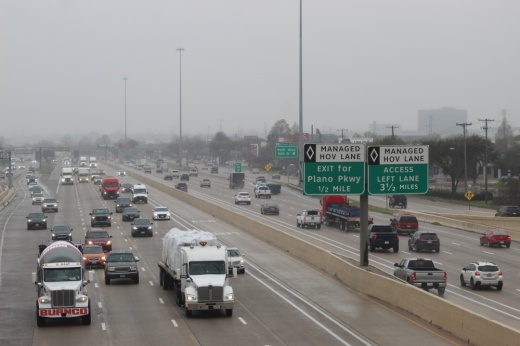On March 4, the Texas Department of Transportation began the first phase of construction on a $57 million project along the highway to replace the existing underutilized separated high-occupancy vehicle lanes along the highway with what the department describes as “technology lanes.”
What you need to know
The first phase of the project, which will ultimately span along US 75 from I-635 to SH 121, began on the section of the highway between the President George Bush Turnpike in the south and SH 121 in the north.
Nightly HOV lane closures are expected from 9 p.m.-5 a.m. through this fall to allow for the removal of pylons separating the HOV lanes from general traffic.
The context
With the project, officials plan to remove the pylons separating the northbound and southbound HOV lanes and turn them into general purpose lanes between I-635 and SH 121. Once completed, the lanes will only be limited to HOVs, low-emission vehicles and motorcycles during peak rush hours—7-9 a.m. southbound and 4-6 p.m. northbound.
Additionally, work includes installing more advanced lighting and signage, which involves replacing the center divider and allowing for electronic infrastructure to be put in place that will give TxDOT the ability to potentially upgrade the lane for other purposes in the future.
“I don't know what [the lanes will] look like in the future yet; we're just kind of setting it up for a future ability,” TxDOT District Engineer Jennifer Vorster said at a Jan. 23 Richardson Chamber of Commerce meeting. “If you just had an information sign or some sort of technology to be developed in the future, you can put it there without having to do the whole project effectively over again.”
Another aspect of the project is looking to work with different city and regional agencies to coordinate signal timing along the frontage road, allowing for first responders to more quickly reach the scene of an accident and adding extra time to clear traffic congestion that could be caused by it.
The entire project is expected to be completed in late 2026.





